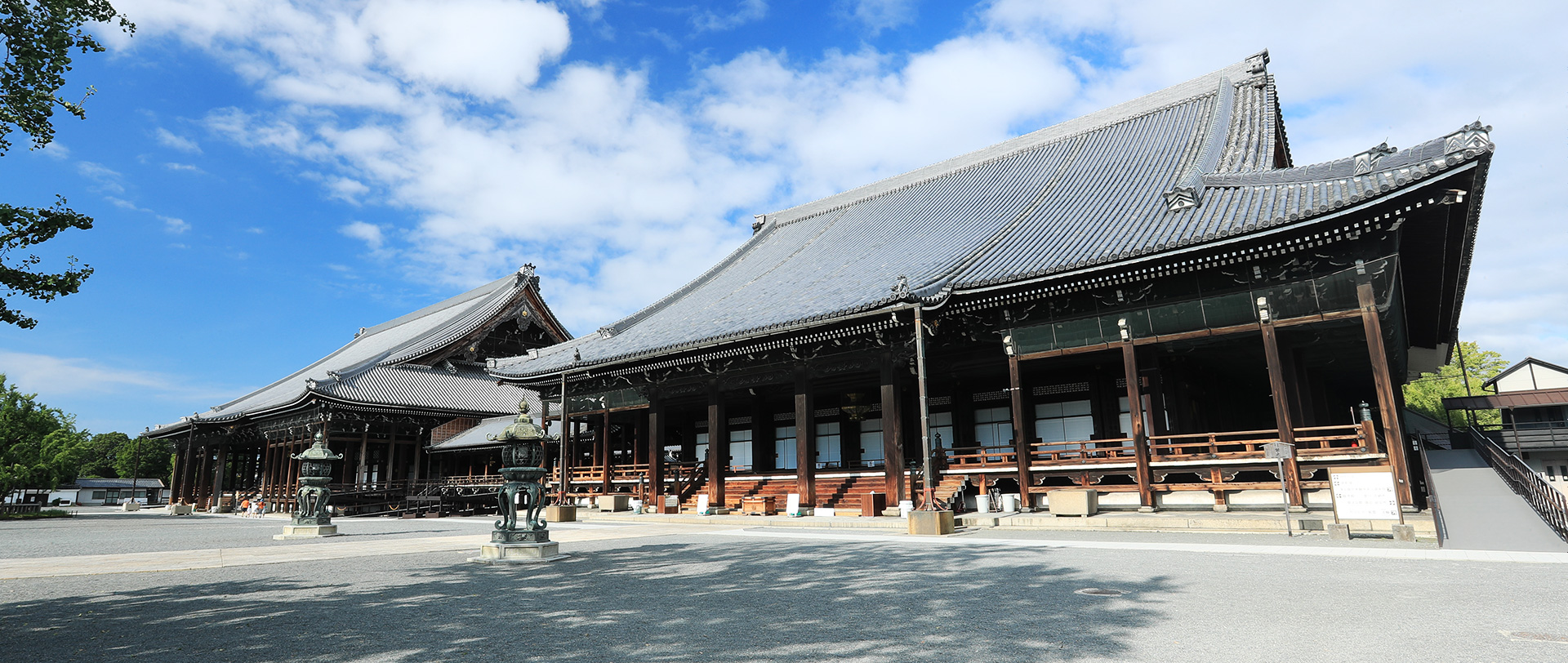Introduction
Nishi Honganji (West Honganji) and Higashi Honganji (East Honganji) are two magnificent temples located in the center of Kyoto. As the headquarters of the two factions of the Jodo Shinshu sect, one of Japan’s most popular Buddhist sects, they offer an excellent opportunity to experience contemporary Japanese Buddhism. These temples not only hold deep historical significance but also attract visitors from around the world with their impressive architecture and serene atmosphere.
Overview of the Honganji Temples
- Nishi Honganji, built in 1591, is the headquarters of the Honganji faction of Jodo Shinshu
- Higashi Honganji, constructed 11 years later, is the headquarters of the Otani faction
- Both temples feature enormous Goeido and Amidado halls
- Nishi Honganji is designated as a UNESCO World Heritage Site
- The Goeido of Higashi Honganji is Kyoto’s largest wooden structure
- Nearby Shoseien Garden offers an additional visiting option
Rich Historical Background
Nishi Honganji was built in 1591 by Toyotomi Hideyoshi after the sect’s former head temple, Ishiyama Honganji in Osaka, was destroyed by Oda Nobunaga. Today, Nishi Honganji oversees more than 10,000 sub-temples across Japan and 200 temples overseas.
Higashi Honganji was constructed just eleven years later, a few blocks east of Nishi Honganji. These two temples have witnessed the evolution of Japanese Buddhism and reflect the political dynamics of their time.
Main Attractions in Detail
Nishi Honganji, the headquarters of the Honganji faction of Jodo Shinshu, boasts two remarkable structures: the Goeido and Amidado halls. The Goeido, dedicated to Shinran, the sect’s founder, is not only immense in scale but also showcases exceptional architectural artistry from the Azuchi-Momoyama and early Edo periods. Equally impressive is the Amidado, which enshrines Amida Buddha, the most important Buddha in Jodo Shinshu Buddhism. These two grand halls stand as the temple’s most spectacular buildings. Another noteworthy attraction is the Hiunkaku Pavilion, a famous architectural masterpiece that exemplifies the pinnacle of traditional Japanese carpentry.
A short distance away, Higashi Honganji serves as the headquarters for the Otani faction of Jodo Shinshu. Its Goeido is renowned as Kyoto’s largest wooden structure, also dedicated to Shinran. The scale of this building is truly awe-inspiring. Adjacent to it stands the Amidado, comparable in size, forming the main architectural complex of Higashi Honganji. These structures not only demonstrate remarkable architectural skills but also highlight the significant status and far-reaching influence of Jodo Shinshu Buddhism.
Several blocks east of Higashi Honganji lies Shoseien Garden. This exquisite Japanese garden, originally a detached temple residence of Higashi Honganji, is now open to the public. The garden features a beautiful pond and offers varying scenic beauty throughout the seasons, with its autumn foliage being particularly famous. Shoseien provides visitors with an ideal retreat from urban bustle and a chance to appreciate the beauty of traditional Japanese landscaping.
These attractions collectively embody the essence of the Honganji temple complex, each imbued with rich historical and cultural significance, showcasing the unique charm of Japanese Buddhist architecture. Whether you’re an architecture enthusiast or a visitor keen to delve into Japanese Buddhist culture, you’ll find elements here that inspire both awe and contemplation.
Best Time to Visit
- Spring: Enjoy the beauty of cherry blossoms in bloom
- Autumn: Marvel at the colorful foliage, especially in Shoseien Garden
- Year-round: Experience the temples’ tranquil atmosphere and deep culture
Getting There
The Honganji temples are located a 10-15 minute walk north of Kyoto Station. From Kyoto Station:
- Walk north along Karasuma Street
- Turn left at Shichijo Street
- Continue walking for a few blocks to reach Nishi Honganji and Higashi Honganji
Hours and Admission
Nishi Honganji
- Hours: 5:30 AM – 5:00 PM
- Open daily
- Free admission
Higashi Honganji
- Hours:
- March to October: 5:50 AM – 5:30 PM
- November to February: 6:20 AM – 4:30 PM
- Open daily
- Free admission
Shoseien Garden
- Hours:
- March to October: 9:00 AM – 5:00 PM
- November to February: 9:00 AM – 4:00 PM
- Last entry 30 minutes before closing
- Open daily
- Admission: 700 yen
Visitor Tips
- Dress modestly and remove shoes when entering temple buildings
- Maintain silence and respect worshippers
- Be mindful of photography restrictions in certain areas
- Allow at least an hour to explore Shoseien Garden
- Consider joining a free English guided tour for deeper historical insights
- Wear comfortable walking shoes as there’s considerable walking involved
Official Websites
Conclusion
The Honganji Temples of Kyoto are not just architectural marvels but living testaments to Japanese Buddhist culture. Whether you’re a Buddhist enthusiast, history buff, or architecture lover, these temples offer a profound experience. When in Kyoto, don’t miss this oasis of tranquility in the city center and immerse yourself in the charm of a thousand-year-old culture.

Leave a Reply